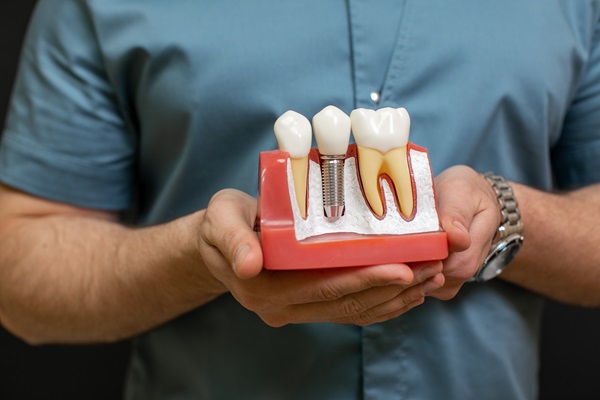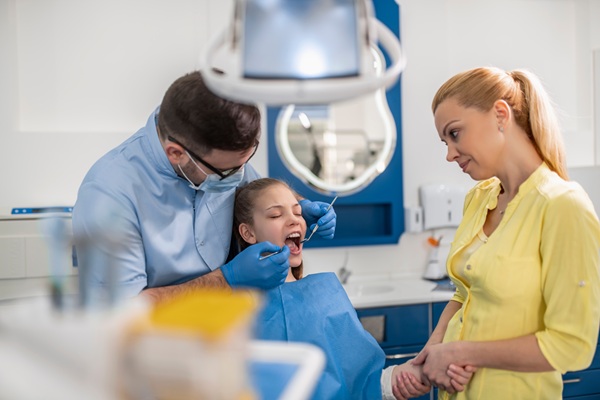What Is a Surgical Dental Implants Procedure?

It is a huge decision to get dental implants. The surgery will result in a permanent dental restoration. Understanding each step is important. Doing so can help you prepare for your coming implant placement. If you want to know what the placement of surgical dental implants entails, here is the procedure.
The preparation
Finding the right dentist is an important part of dental implant surgery. The placement of dental implants is an extensive job. Only a highly trained dental care provider can deliver optimal results. A consultation will follow after choosing the right dentist.
The dentist will ask about the patient’s medical history and dental history. Then, the dentist will examine the patient’s mouth. Discussing some preparatory treatments will be next. An examination of the sinuses, bones, and nerves is necessary. A panoramic X-ray can determine any areas with gum disease and dental decay. These problems will need treatment before the placement of dental implants.
Dental extraction may be one of the preparatory treatments if any of the patient’s teeth have severe decay. Healing after this treatment will take about one to two months. Only then will the implant surgery begin. However, the dentist can place an implant a day after the extraction if the situation is critical.
A patient with jawbone loss will need either a sinus lift or a bone graft to strengthen the area. This could delay the implant surgery. The healing for this preparatory treatment will be three months to a year. Then, the placing of the dental implants could begin.
The implant placement
The surgery will happen in the clinic’s treatment room. The form of sedation depends on the patient’s level of anxiety and desired level of comfort. The dentist will explain again how many implants the patient needs. Explaining how challenging the procedure will be can help prepare the patient for the procedure. The dentist will then start by cutting through the gum tissue and exposing the sections of the jawbone. Then, the dentist will drill implant holes into the bone.
Placing the dental implants will be next. The dentist will close the site by stitching the gums close. The gum tissue will protect the titanium rod from food particles. This will also encourage healing and osseointegration. The site needs to heal for four to six months.
The abutment and dental crown placement
Attaching the abutments of the dental implants will come next. The dentist will need to cut through the top of the titanium rods for this step. Then, the dentist will stitch back the area after placing the abutment. The dentist will take an impression of the patient’s jaw with the abutment in place. The dental lab will use these impressions to create custom-fit dental crowns. Two weeks later, the dentist will attach the dental crowns to the dental implants.
Recovering after the procedure
Healing can take at least six months for some patients. This process can be nerve-racking and disheartening for some people. The main goal is to have complete osseointegration. It is a relief for most patients to have a successful implant fusion with the jawbone. Making recovery quicker and easier is possible with the following tips:
- Maintaining a soft diet of soft and nutritious food during the early postoperative days. The doctor can help guide the patient on what to eat. Keeping chewing minimal can prevent putting pressure on the implant site. Protein-rich food can help repair and rebuild the tissues around the implant. This can help with quick fusion.
- Resting can help with the body’s healing. This helps the body concentrate its energy and resources on recovery. Avoiding strenuous activities can prevent accidental trauma to the face or excessive pressure on the implant site.
- Using ice packs on the side of the implant site for 20 minutes can reduce the pain and swelling.
- Drinking more water can help the body remove toxins from the body. This can help speed up the healing process. Avoiding alcohol can prevent cell dehydration.
- Practicing good oral care can prevent bacteria from staying around and entering the implant site.
- Quitting tobacco consumption can help with faster recovery and complete osseointegration.
Learning the steps in the placement of dental implants is an advantage
Preparing for the placement of your dental implants is important. Part of this is to find out about the different steps of the procedure. This can trigger more questions you can ask your dentist during the breakdown of the process. Seeing your dentist before the implant placement can reveal any problem areas in the mouth in need of treatment first before the major dental surgery.
Are you considering getting dental implants in the Gainesville area? Get more information at https://gallodental.com.
Check out what others are saying about our dental services on Yelp: Dental Implants in Gainesville, GA.
Recent Posts
Losing a tooth is never something that you would want to happen, but since it can be unavoidable, you should know that a dental implant is one of the top options for replacing a missing tooth. There are many advantages to pursuing this path over alternatives like dentures. It is true that dental implant installation…
A dental implants is widely considered the tooth replacement solution that most closely resembles a natural tooth in durability, functionality, and appearance. However, like natural teeth, dental implants require diligent and consistent care to ensure longevity. Incorporating proper dental implant care into your oral hygiene routine can prevent complications and keep your smile healthy for…
Curious about dental implants? Read on to learn more. Having a missing tooth or teeth can make you feel self-conscious and reluctant to smile in public. In many cases, dental implants are the preferred and popular option to resolve this issue. Besides being a functional tooth replacement, they also appear natural and fit in with…
A dental implant is the gold standard of dental restorations. It provides stability and natural-looking results. Understanding the benefits of implants can motivate you to see your general dentist about it. Here are the different oral health advantages of a dental implant.The titanium rod acts as the dental root. It merges with the jawbone and…


